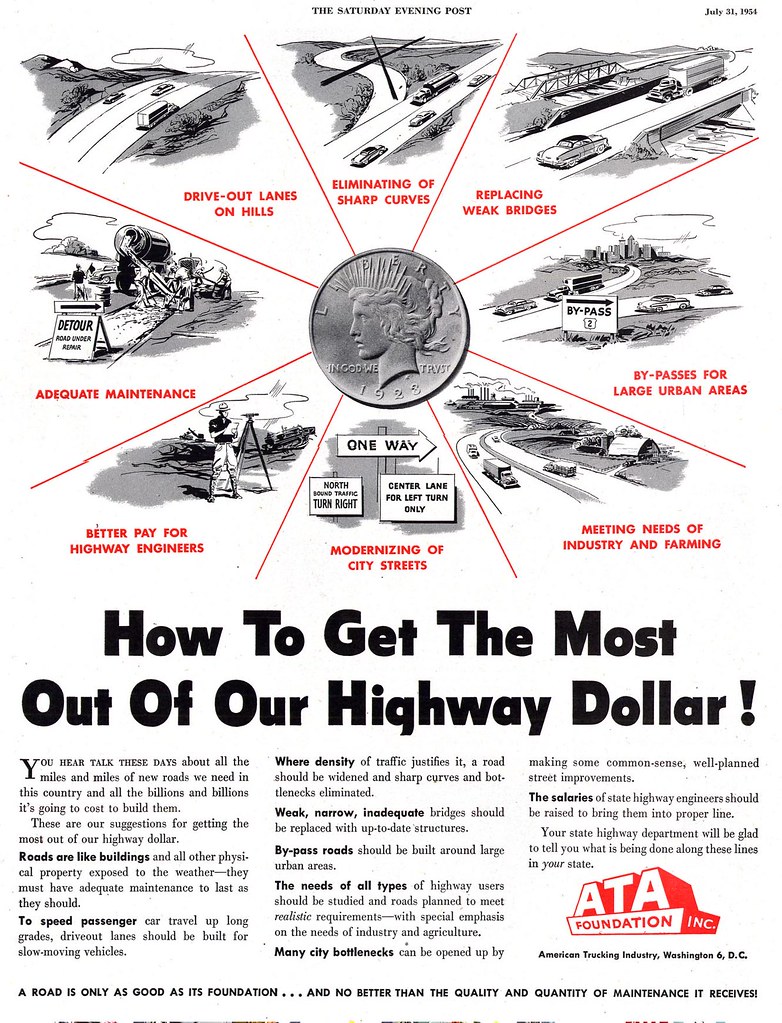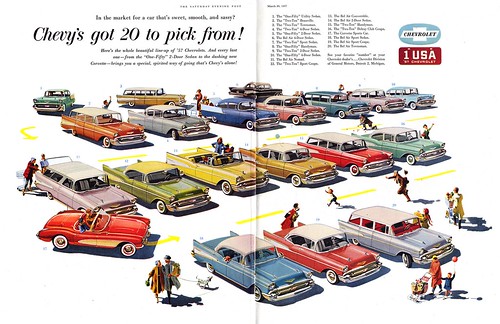 Listen to this glowing description of Los Angeles in the November 1953 issue of Elks magazine:
Listen to this glowing description of Los Angeles in the November 1953 issue of Elks magazine:Eye-popping growth that not even the nation's worst depression could stop is the major phenomenon of this phenomenal land. It amazes even Los Angelos. In the depression decade 1930-1940 the City of Los Angeles jumped from 1,238,000 to 1,504,000. The 1950 census gave the City a whopping 1,970.000, and the April 1, 1953, official estimate was 2,100,000. Figures for Los Angeles County are even more staggering. In the same 23-year period, the County's population more than doubled from 2,208,000 to 4,650,000 this year.
No stranger to coping with an expanding economy, Los Angeles has tackled with energy, enthusiasm, imagination and success such inevitable problems as housing, schools and traffic that have overwhelmed lesser communities. Seven hundred thousand homes have been built in Los Angeles County since 1940, a quarter million of them since 1950, at a pace that left even the natives goggle-eyed.
 In this vast area, an automobile is a necessity, and practically everybody has one. Furthermore, where people think nothing of driving a couple of hundred miles for an evening of bridge, its considered odd to walk even to the corner drugstore. There are 1,900,000 private passenger cars (not counting several hundred thousand filled with wide-eyed tourists) in Los Angeles County, or one for every 2.3 persons, the highest ratio of any major city in the world.
In this vast area, an automobile is a necessity, and practically everybody has one. Furthermore, where people think nothing of driving a couple of hundred miles for an evening of bridge, its considered odd to walk even to the corner drugstore. There are 1,900,000 private passenger cars (not counting several hundred thousand filled with wide-eyed tourists) in Los Angeles County, or one for every 2.3 persons, the highest ratio of any major city in the world. Every morning, a great flood of cars pours into downtown Los Angeles from all directions, and recedes at night, and there are similar maelstroms operating around the other centers. The steady flow of the non-peak hours is only slightly less. Under these conditions, traffic could become a paralyzing problem; [but] Los Angeles has applied a simple logic to the traffic problem. The result is a system of super-highways that makes real the movie shorts of the 20's portraying the city of the future.
Every morning, a great flood of cars pours into downtown Los Angeles from all directions, and recedes at night, and there are similar maelstroms operating around the other centers. The steady flow of the non-peak hours is only slightly less. Under these conditions, traffic could become a paralyzing problem; [but] Los Angeles has applied a simple logic to the traffic problem. The result is a system of super-highways that makes real the movie shorts of the 20's portraying the city of the future. And standing by to remind the nation about how their communities could become as swell as Los Angeles were the auto, oil and road-building industries, utilyzing countless ads, presented weekly in national magazines like the Saturday Evening Post.
And standing by to remind the nation about how their communities could become as swell as Los Angeles were the auto, oil and road-building industries, utilyzing countless ads, presented weekly in national magazines like the Saturday Evening Post. So where was everyone driving to? Tomorrow we'll finally take a look at "home, sweet home".
A fascinating series this week.
ReplyDeleteIt's interesting how there's an overiding 'technical' aspect to the illustrations . Lots of vehicles & structures + product , and not much of a human component.Can't say it's the type of illustrations I would have enjoyed doing myself.
Thanks for posting.
Dom; Thanks - I'm glad you're enjoying them - I always feel like, though the subject matter is mundane, the artwork deserves recognition for its great quality.
ReplyDeleteNeil; Its great to have the benefit of your knowledge - I really appreciate it! :-)
Hello. I have just gotten an ad fromt he March 22, 1958 Sauturday Evening Post. It is an ad for the '58 Chevrolet. The illustrator's name looks to be something Briggs? Can anybody help me out with that name? Thanks
ReplyDeleteThat would probably be "Austin Briggs", ann-marie. You can see some examples of his work here
ReplyDelete